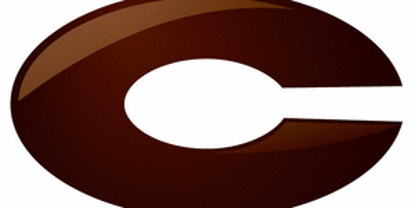The buffalo berry (Shepherdia argentea) is a winter hardy & drought tolerant nitrogen-fixer, and produces delicious berries that are packed with vitamin C and antioxidants such as lycopene.

Originating from the great plains of the USA, buffalo berry was long used by Native Americans for food and other products, but has never been commercialised. The plant is related to Elaeagnus and sea buckthorn and the fruits too resemble those of these better-known edibles.
The name may have originated when the fruits were used to spice up buffalo meat and/or when the fruits were ripe it was time for the buffalo hunt.
Description
Plants are large shrubs/small trees, spiny with pale thorny branches, growing 4-6m (13-20ft) high. Plants are dioecious, (have male and female reproductive organs), with small whitish-yellow male and female flowers borne on separate plants. Fruits are 7-10mm (0.3-0.4ins) across, scarlet/red flecked with silver, tart like speckled redcurrants.
Like Elaeagnus and sea buckthorn, buffalo berry is a nitrogen-fixer, able to fix large amounts of nitrogen and benefiting nearby plants. It can also sucker readily.
Buffalo berry is very winter hardy, drought tolerant and its flowers are tolerant of frosts.

Uses
In late summer the fruits are tart but they get sweeter later in the season and after frosts. They make an exceptional jelly, and can be eaten fresh, cooked or dried. Note that the high level of saponins in fresh fruits can cause digestive irritation if eaten in large amounts.
The fruits are high in vitamin C and are rich in carotenoid and phenolic antioxidant compounds including lycopene.
Very suitable as a hedge or windbreak plant, as it tolerates exposure.
Varieties/Cultivars
There are no named cultivars yet but Agriculture and Agri-Food Canada (AAFC) is developing male and female cultivars aimed at commercial production for release in around 2016-17. Some very sweet varieties are being developed.
Cultivation
Buffalo berry prefers well-drained soils with a pH of slightly acid to alkaline. The roots are prone to damage if they dry so keep moist when planting; but once established plants are drought tolerant.
Both male and female plants are required for fruiting – one male for a number of females within 15m (50ft) or so. Flowers appear at an age of 2-3 years. Fruits are borne on one-year-old wood, like on sea buckthorn, and are similarly borne very close to the branches with small fruit stalks, making harvesting tricky and hand harvesting slow. The fruits ripen in late summer and early autumn.
The plant appears well adapted to mechanical harvesting. Traditional harvesting methods involved knocking the branches, with only the ripe fruits falling. Like sea buckthorn, possible other innovative harvest methods include pruning off fruiting branches and freezing (then knocking the fruits off) – this requires a biennial fruiting strategy; and using a vacuum harvesting system.
Plants can be grown from seed – the seed requires about three months of cold stratification. New seedlings can be prone to damping off diseases. The sex of seedlings will be unknown until they flower.
Plants can also be propagated by softwood cuttings in midsummer.
Pests and diseases
There seem to be none of any importance.
Related species
Canadian buffalo berry or russet buffalo berry (S. canadensis) is a smaller shrub with similar edible fruits.
Buffalo berry - Shepherdia argentea - is deciduous, nitrogn-fixing, has edible fruit and grows in Zone 2 / H7.














































































































































